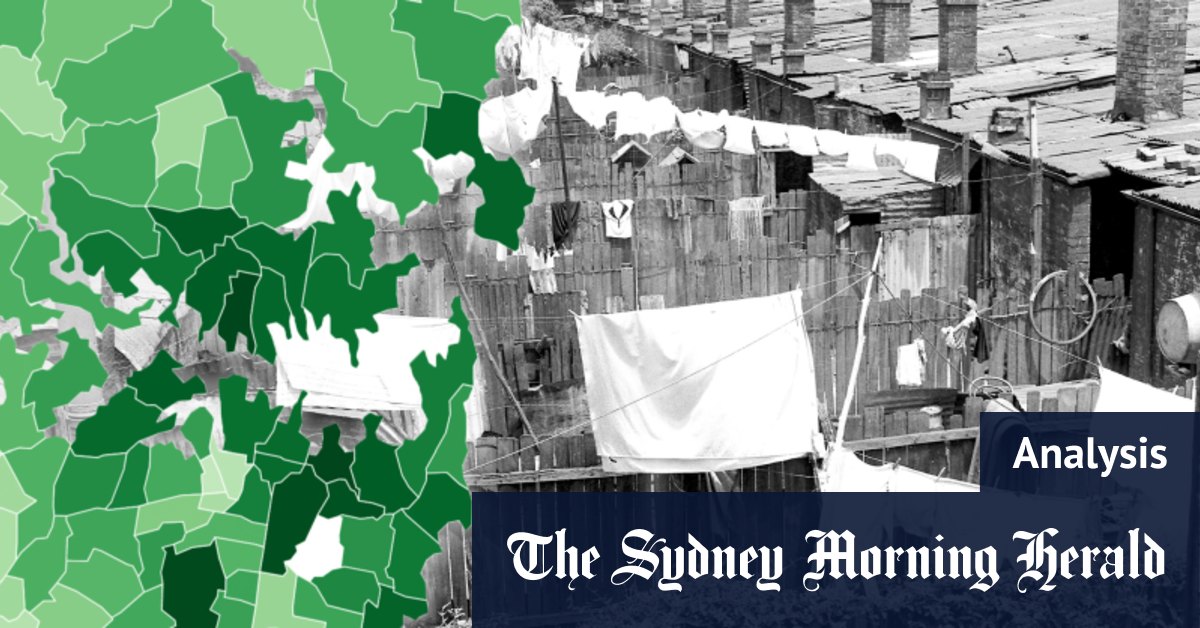Erskineville-Alexandria leads a swag of suburbs to the south and west of the central business district which have climbed the city’s earnings rankings over the past decade. herald analysis of census data shows Waterloo, Rosebery-Beaconsfield, Botany, Marrickville North, Dulwich Hill-Lewisham, Sydenham-Tempe-St Peters and Haberfield-Summer Hill were among the suburbs with the fastest growing incomes between 2011 and 2021.
Ten years ago, the personal median income in Waterloo was $533 a week, below the citywide median of $619. But in 2021, Waterloo’s median income had more than doubled to $1,172, or a third higher than the citywide median (the median being the midpoint of all incomes).
Other neighborhoods where personal income growth outpaced the rest over that period were Wentworthville-Westmead, Macquarie Park-Marsfield and St Leonards-Naremburn.
The biggest declines in personal incomes relative to Sydney’s median over the decade were in the south-west including Prestons, Edensor Park and Bossley Park-Abbotsbury.
In 2011, the median weekly income in Prestons was $657, about 5 per cent higher than that of Greater Sydney. But by the 2021 census, while the area’s median income had increased to $757, it had not kept pace with income growth with the rest of Sydney and the area’s median income was less than the citywide median of $881.
However, the especially strict COVID-19 lockdown restrictions in Sydney’s west and south-west when the census data was collected in August 2021 could have impacted on people’s working patterns.
Rawnsley says many retail and service workers in the region, especially casuals, couldn’t get to their jobs during the lockdown and that they may have had a “statistical impact” on the income data.
The pandemic skewed income patterns in some places
While the harsh COVID-19 lockdowns may have subdued the level of income reported in Sydney’s west and south-west, in some suburbs the restrictions helped trigger a massive spike. In Ultimo, for instance, the personal median income was 100 per cent higher in 2021 than when the previous census was taken five years earlier. In Kensington, the jump was 85 per cent and in Camperdown-Darlington 67 per cent.
Unfortunately for locals the change wasn’t driven by big pay rises but by the exodus of students due to pandemic border closures and other restrictions. Each of those suburbs is adjacent to a big university and so had a high share of student residents.
Census data shows Kensington, Ultimo and Camperdown recorded the biggest population drops of any suburbs in the state over the past five years, and all had more than 15 per cent fewer people living there compared to census night in 2016.
Because so many students work part-time, and their incomes are relatively low, their mass departure artificially increased the income profiles of some suburban adjacent universities.
Northwest rising
Incomes are relatively high across much of Sydney’s north-west, including neighborhoods where housing development has been expanding rapidly. The census revealed five suburbs in that region with booming numbers and fast-growing pay packets.
The population of Box Hill-Nelson, near Windsor, has increased by more than 600 per cent during the past decade and its median personal weekly income has doubled to $1,274 in that period.
Suburbs nearby also showing strong population and income growth were Marsden Park-Shanes Park, Schofields West-Colebee, Schofields East and Riverstone.
These neighborhoods have been attractive to white-collar workers with children because of the relatively affordable housing and proximity to major transport corridors including the M7 motorway. This provides access to major knowledge-employment hubs including the central business district, North Sydney and Macquarie Park.
unequal city
The 2021 census, released in June, drew attention to huge income disparities across Sydney.
A small group of very high-income neighbourhoods, with personal weekly medians above $1500, is clustered near Sydney harbour.
But Sydney’s poorest suburbs were also highly concentrated. Neighborhoods with the city’s lowest median weekly personal incomes – all under $500 – were bunched around Fairfield and Cabramatta.
Double Bay-Darling Point in the city’s eastern suburbs had the highest median weekly personal income of $1,690. About 40 kilometers across town in Ashcroft-Busby-Miller the figure was less than a third of that, at $452.
This map shows where these are clustered, with the suburbs where weekly income is below $500 a week shaded orange and areas with income above $1500 shaded green:
Separate figures released recently by the Bureau of Statistics show the top 1 per cent of earners in Sydney take home a bigger share of the city’s total income than any other capital. In Sydney, the top 1 per cent snared 11.7 per cent of Sydney’s income in 2018-19, up from 11.5 per cent in 2012-13. The next highest was Perth where the top 1 per cent earned 10.1 per cent of the city’s income. Australia-wide 9.5 per cent of income went to the top 1 per cent of earners.
How Sydney compares
Taxation statistics released earlier this month showed that among the ten postcodes with the highest average taxable incomes in Australia eight were in Sydney. And all of them were located on the harbour.
But when it comes to citywide figures, the census found Darwin and Canberra had a higher median personal income than Sydney.
Even so, incomes in Sydney are high by national standards. The city’s median weekly personal annual income was about $75 (or 10 per cent) more than the nationwide figure, which translates to about $4000 a year.
The Morning Edition newsletter is our guide to the day’s most important and interesting stories, analysis and insights. Sign up here.
